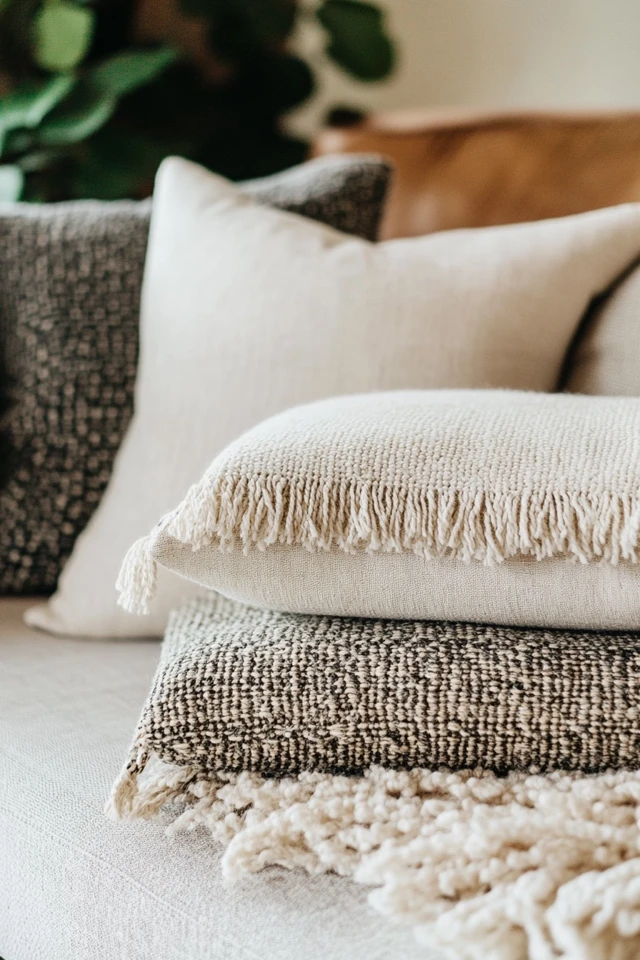Texture is the unsung hero of interior design. While color and layout often take the spotlight, texture works quietly behind the scenes to create depth, interest, and warmth in a space. It’s the difference between a flat, uninspired room and one that feels layered, inviting, and full of personality.
I learned the importance of texture firsthand during one of my earliest projects—a minimalist living room with white walls and sleek furniture. While everything looked polished, the space felt cold and incomplete. By adding a chunky knit throw, a woven jute rug, and velvet pillows, the room transformed into a cozy, welcoming retreat. That experience solidified my belief that texture isn’t just an add-on—it’s a design essential.
In this guide, we’ll explore how to use texture to create depth in your home decor, with tips for layering materials, balancing contrasts, and styling your space like a pro.
Why Texture Matters in Home Decor
1. Adds Depth and Dimension
Texture prevents a room from feeling flat by creating layers of visual and tactile interest.
2. Enhances Comfort and Warmth
Soft, textured elements like rugs and throws make a space feel cozy and inviting.
3. Balances Contrasts
Mixing smooth and rough textures creates a balanced, harmonious look.
4. Highlights Design Elements
Texture draws attention to focal points, like a statement wall or a unique piece of furniture.
Types of Texture in Interior Design
1. Tactile Texture (Physical Feel)
- Examples: The softness of a velvet pillow, the roughness of a jute rug, or the smoothness of a glass vase.
- Impact: Invites touch and makes a space feel more engaging.
2. Visual Texture (Appearance)
- Examples: Faux fur, patterns, and finishes that give the illusion of texture.
- Impact: Creates interest without adding bulk or weight to the design.
Tips for Using Texture in Home Decor
1. Layer Different Materials
Combine a variety of materials to create a richly layered look.
- Pair soft textiles (like wool or linen) with hard surfaces (like wood or metal).
- Layer rugs over hardwood floors or mix a smooth leather sofa with plush cushions.
- Incorporate natural materials like wicker, stone, or bamboo for an organic touch.
Pro Tip: Stick to 2–3 dominant textures per room to avoid visual clutter.
2. Contrast Smooth and Rough Finishes
Contrasting textures add balance and visual interest to a space.
- Combine rough textures, like brick or reclaimed wood, with smooth finishes, like glass or polished metals.
- Pair a sleek coffee table with a woven basket or chunky knit throw.
- Use glossy surfaces, like mirrors or lacquered furniture, to offset matte or textured walls.
Pro Tip: Contrasts work best when they’re subtle and intentional—don’t overwhelm the space with too many opposites.
3. Incorporate Textured Walls and Ceilings
Walls and ceilings are prime opportunities to add texture.
- Install shiplap or beadboard for a coastal or farmhouse vibe.
- Use textured wallpaper, like grasscloth or geometric patterns, for an upscale look.
- Add exposed beams, coffered ceilings, or decorative molding for architectural interest.
Pro Tip: Keep textured walls neutral to let furniture and decor shine.
4. Play With Textured Accessories
Accessories are an easy and budget-friendly way to experiment with texture.
- Add woven baskets, macramé wall hangings, or ceramic vases to create layers.
- Use textured pillows and throws in a mix of fabrics, like velvet, faux fur, and cotton.
- Incorporate plants or dried greenery for a natural, tactile element.
Pro Tip: Choose accessories in varying textures but complementary colors for a cohesive look.
5. Use Rugs to Ground the Space
Rugs are one of the best ways to introduce texture, especially in rooms with hard flooring.
- Choose natural fiber rugs, like jute or sisal, for a casual, earthy feel.
- Opt for plush area rugs or shag styles to add softness and warmth.
- Layer rugs, such as a patterned rug over a larger neutral one, for added dimension.
Pro Tip: Match the rug’s texture to the room’s function—for example, soft and cozy for a bedroom, durable and low-pile for high-traffic areas.
6. Combine Patterns and Textures
Patterns add visual texture, even if they’re on smooth surfaces.
- Use patterned throw pillows or blankets to break up solid furniture.
- Incorporate textured patterns, like herringbone or chevron, in tiles, rugs, or upholstery.
- Mix subtle patterns with bold textures for balance.
Pro Tip: Stick to one or two patterns per room to avoid overwhelming the design.
7. Add Texture Through Lighting
Lighting can enhance texture and create depth through shadows and highlights.
- Use pendant lights with woven or metal shades for a tactile look.
- Highlight textured walls or furniture with directional spotlights or sconces.
- Choose fixtures with frosted or textured glass for a subtle touch.
Pro Tip: Experiment with different bulb temperatures—warm light enhances coziness, while cool light highlights details.
8. Incorporate Natural Elements
Natural materials are inherently textured and bring warmth and authenticity to a space.
- Use wood furniture with visible grain or live edges.
- Incorporate stone surfaces, like a marble countertop or slate backsplash.
- Add plants, dried branches, or floral arrangements for organic texture.
Pro Tip: Combine natural elements with soft fabrics and smooth finishes for a balanced look.
9. Don’t Forget the Ceiling
Ceilings are often overlooked but can add a dramatic textural element.
- Add wood beams or planks for a rustic feel.
- Use tin tiles or decorative panels for a vintage look.
- Paint the ceiling with a textured finish for subtle interest.
Pro Tip: Keep the ceiling lighter in color to maintain an open, airy feel.
Picture Gallery
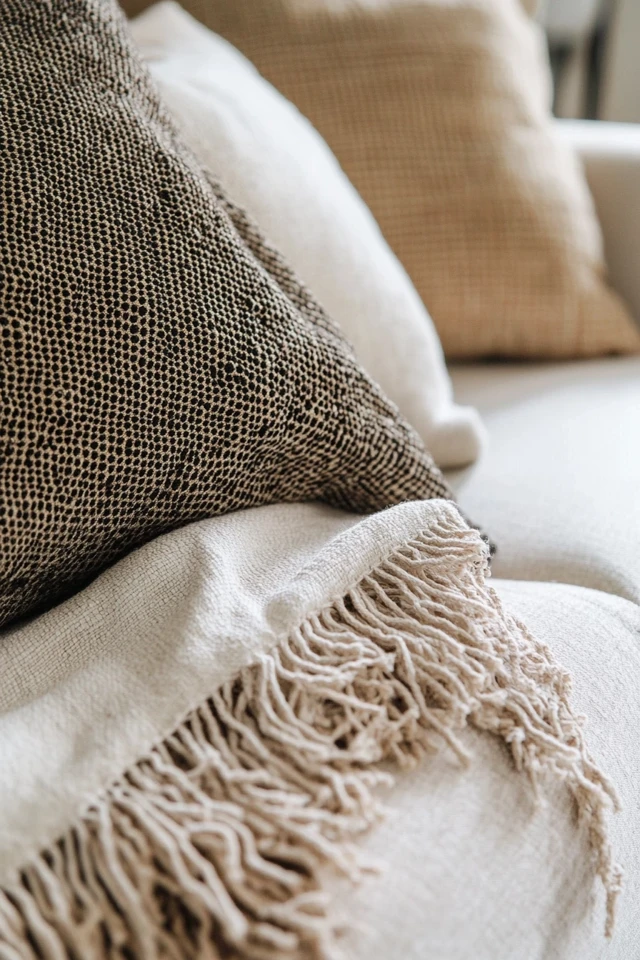

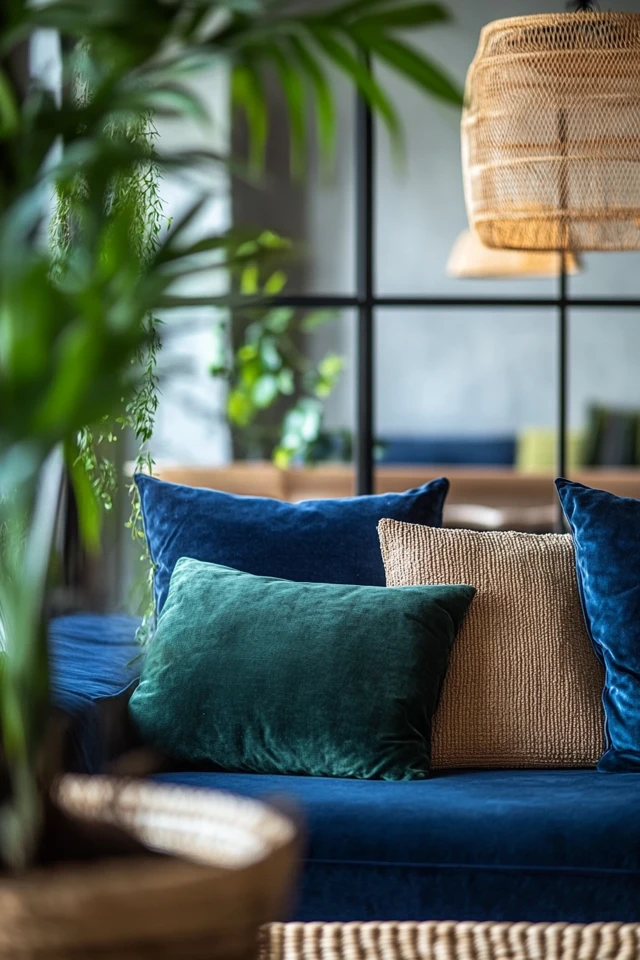
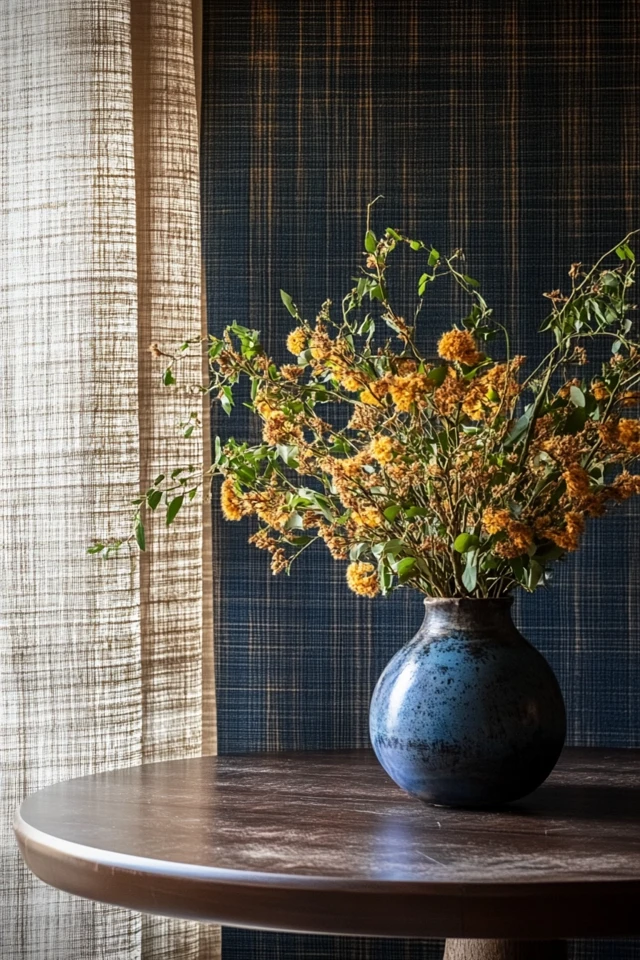
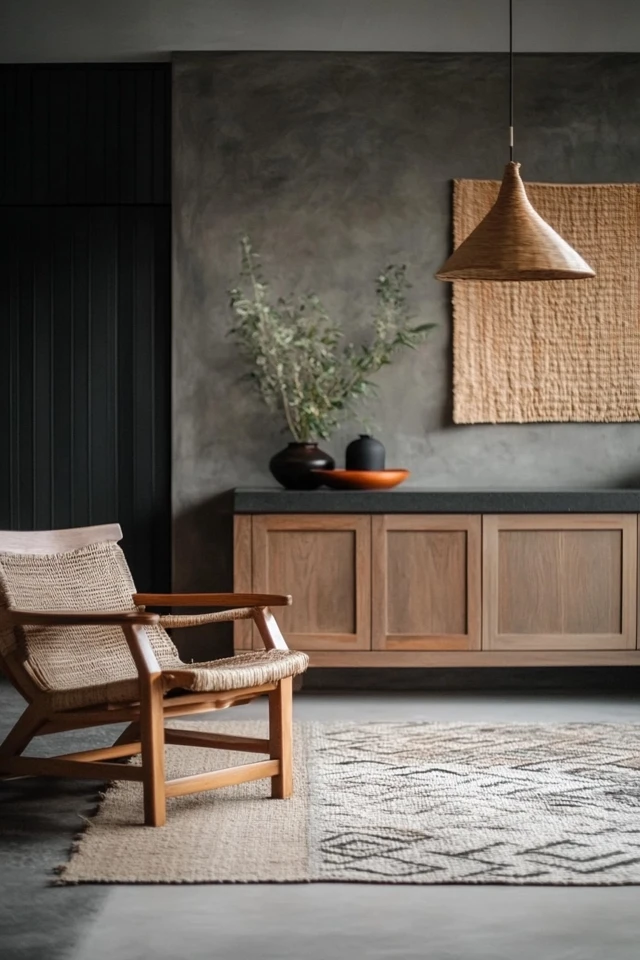
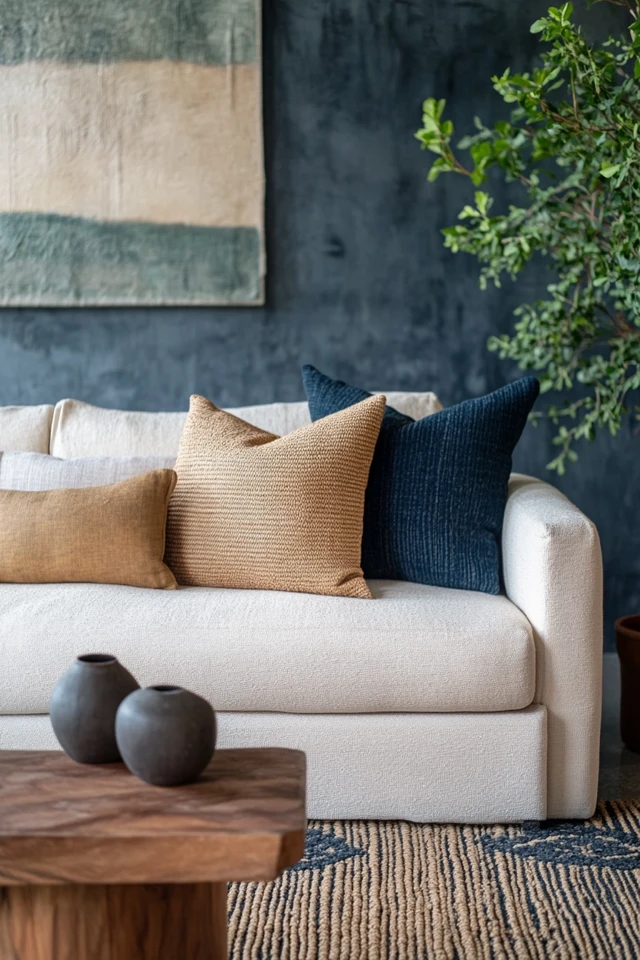
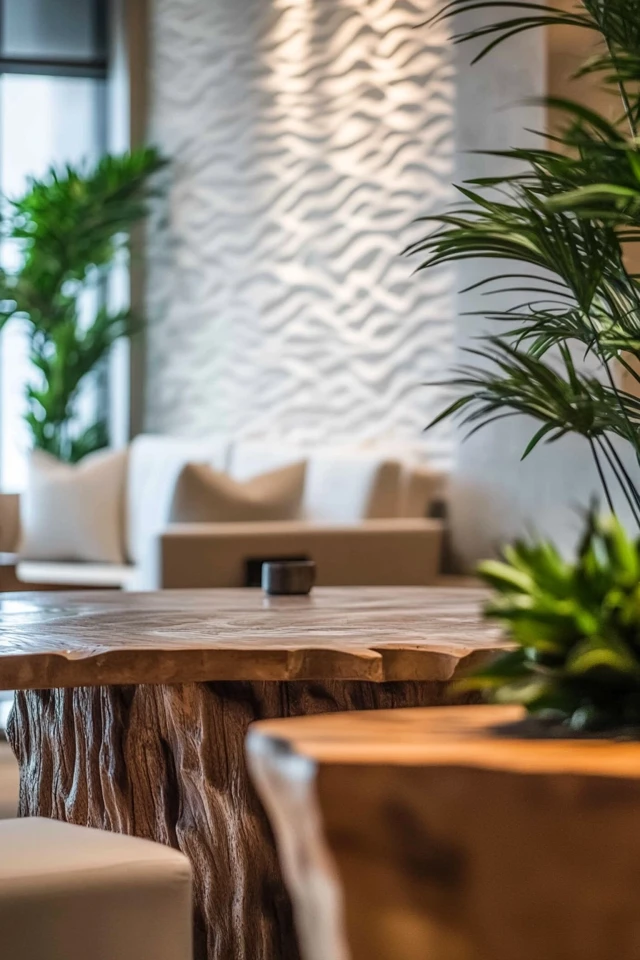
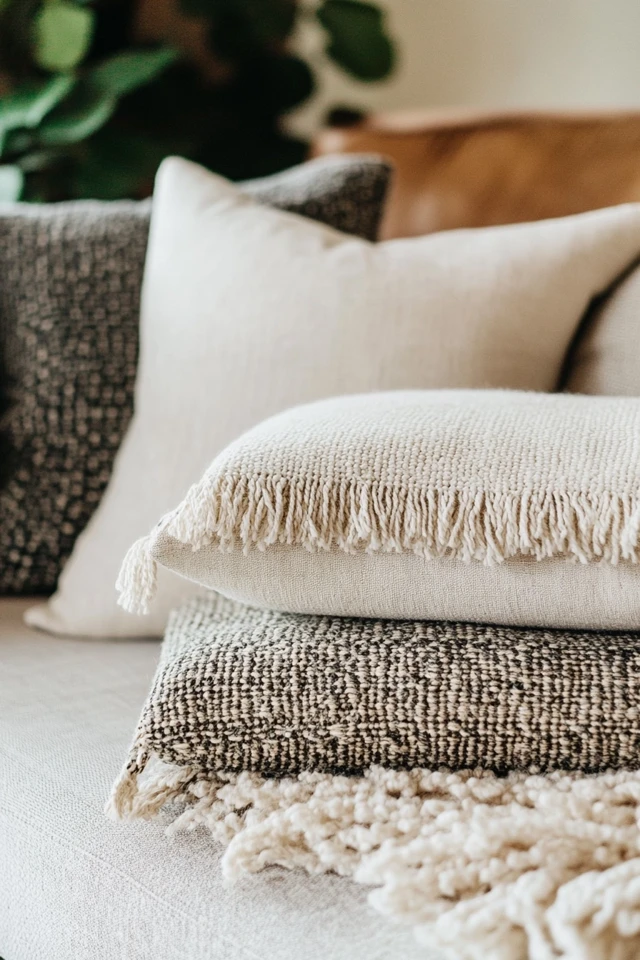
Common Mistakes to Avoid
1. Overloading with Texture
Too many textures can overwhelm a room and make it feel chaotic. Stick to a balanced mix of 2–3 dominant textures.
2. Ignoring Balance
Ensure textures are evenly distributed throughout the space. For example, if you have a textured sofa, balance it with smooth walls and accessories.
3. Forgetting Functionality
Choose textures that suit the room’s purpose—for example, soft and plush for a bedroom, durable and easy-to-clean for a dining room.
Conclusion
Using texture in home decor is the key to creating spaces that feel layered, dynamic, and inviting. By mixing materials, balancing contrasts, and layering tactile elements, you can add depth and personality to any room. Whether you’re styling a cozy living room or a minimalist bedroom, texture has the power to transform your space from flat to fabulous.
So, start experimenting with different materials and finishes, and watch your home come to life with depth and dimension.
FAQs
1. How do I add texture without changing the walls or furniture?
Incorporate textured accessories like rugs, throw pillows, blankets, and baskets. Add plants or decorative objects with interesting finishes.
2. Can I mix different textures in one room?
Yes! Mixing textures adds interest and balance. Pair soft textures with rough ones, and smooth finishes with matte or natural elements.
3. How do I choose the right rug for texture?
Choose a rug based on the room’s function. Opt for natural fibers like jute for casual spaces and plush rugs for comfort in bedrooms or living rooms.
4. Can I use texture in minimalist spaces?
Absolutely! Texture is essential in minimalist spaces to prevent them from feeling cold or sterile. Use subtle textures, like linen, wool, or matte finishes.
5. What’s the easiest way to add texture to a room?
Start with accessories like throw pillows, blankets, and a textured rug. Layer these items to create depth without making major changes.

